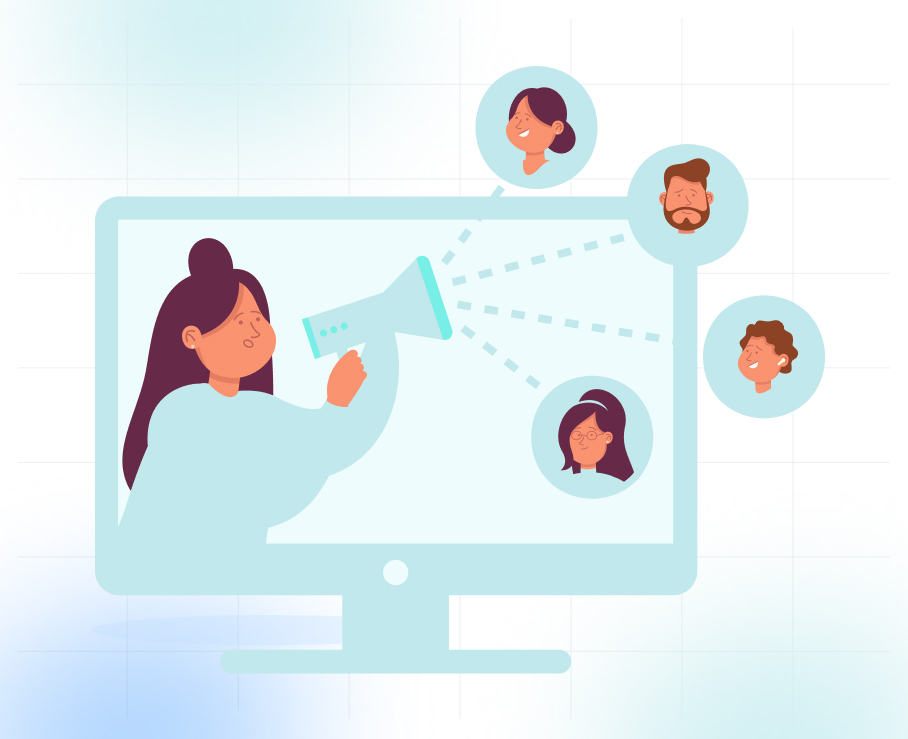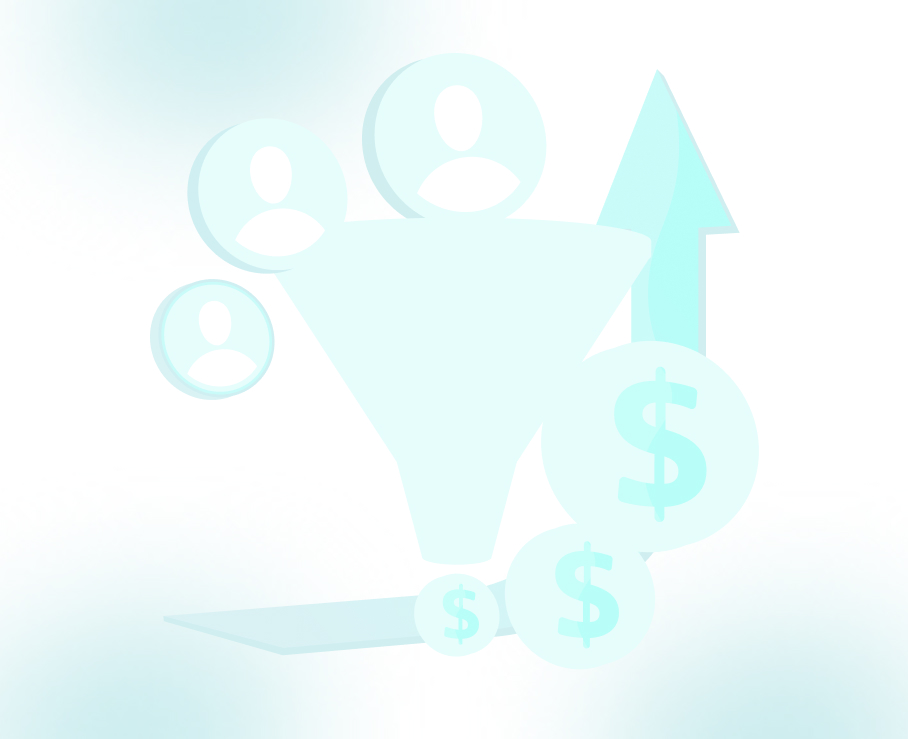
Email Marketing 101: A Beginner's Guide to Success
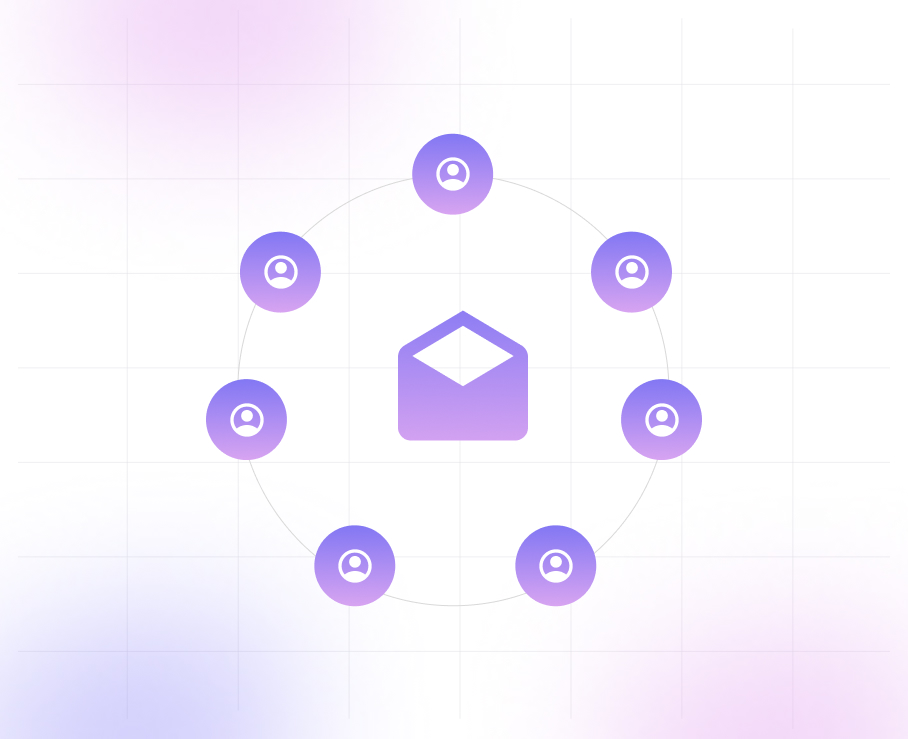
There’s a reason email remains at the core of B2B sales strategy. In 2023 alone, it delivered 108% higher engagement than SMS and banner ads, outperforming social media posts and ads by 13% and 11%, respectively. Not because it's flashy, but because it gets through.
Email gives you space to start conversations without the noise of cold calls or short-lived ads. It works when it’s clear, timely, and sent with intent. And for businesses focused on monthly recurring revenue, few channels offer the same level of control.
This guide covers the basics that matter, email marketing 101, focused on how to structure your campaigns, write for action, and build a system that keeps your pipeline moving.
TL;DR
- MRR-first, not mass-first: Treat every email as a step toward recurring revenue and not a broadcast. Strategy beats volume.
- List quality = pipeline quality: The strongest campaigns start with segmentation, not send buttons.
- Subject lines are filters: Relevance decides who opens your email and who engages with it.
- Getting into the inbox takes more than hitting send: Clean lists, clear opt-ins, and sender credibility decide whether your email gets read or filtered out.
- Execution is a process, not a send date: Campaigns that convert are tested, iterated, and built to match buyer behavior, especially in B2B.
Why Email Marketing Still Works
For B2B companies looking to grow their pipeline and drive monthly recurring revenue, email remains one of the most efficient and controllable channels. Unlike ads or social media, email puts your message directly into a decision-maker’s inbox, where real conversations happen.
Here’s why email continues to outperform other outreach methods:
- High ROI, Low Waste: Email outperformed banner ads and SMS marketing by 108% in 2023, delivering stronger returns with less spend.
- Direct Access to Decision-Makers: Email reaches people in work mode, not scroll mode, making it easier to start focused conversations.
- Control Over Targeting and Messaging: Build segmented campaigns tailored by role, industry, or behavior, without algorithm guesswork.
- Data That Drives Action: Opens, clicks, and replies are measurable, letting you adjust fast and prioritize the right leads.
- Scalable and Repeatable: Once set up, campaigns can run consistently without needing constant input, ideal for maintaining outreach momentum.
Now, let’s break down email marketing 101 into four practical steps to help you get started the right way.
Also Read: Demand Generation: Strategies and Benefits Explained
4 Steps to Get Started with Email Marketing
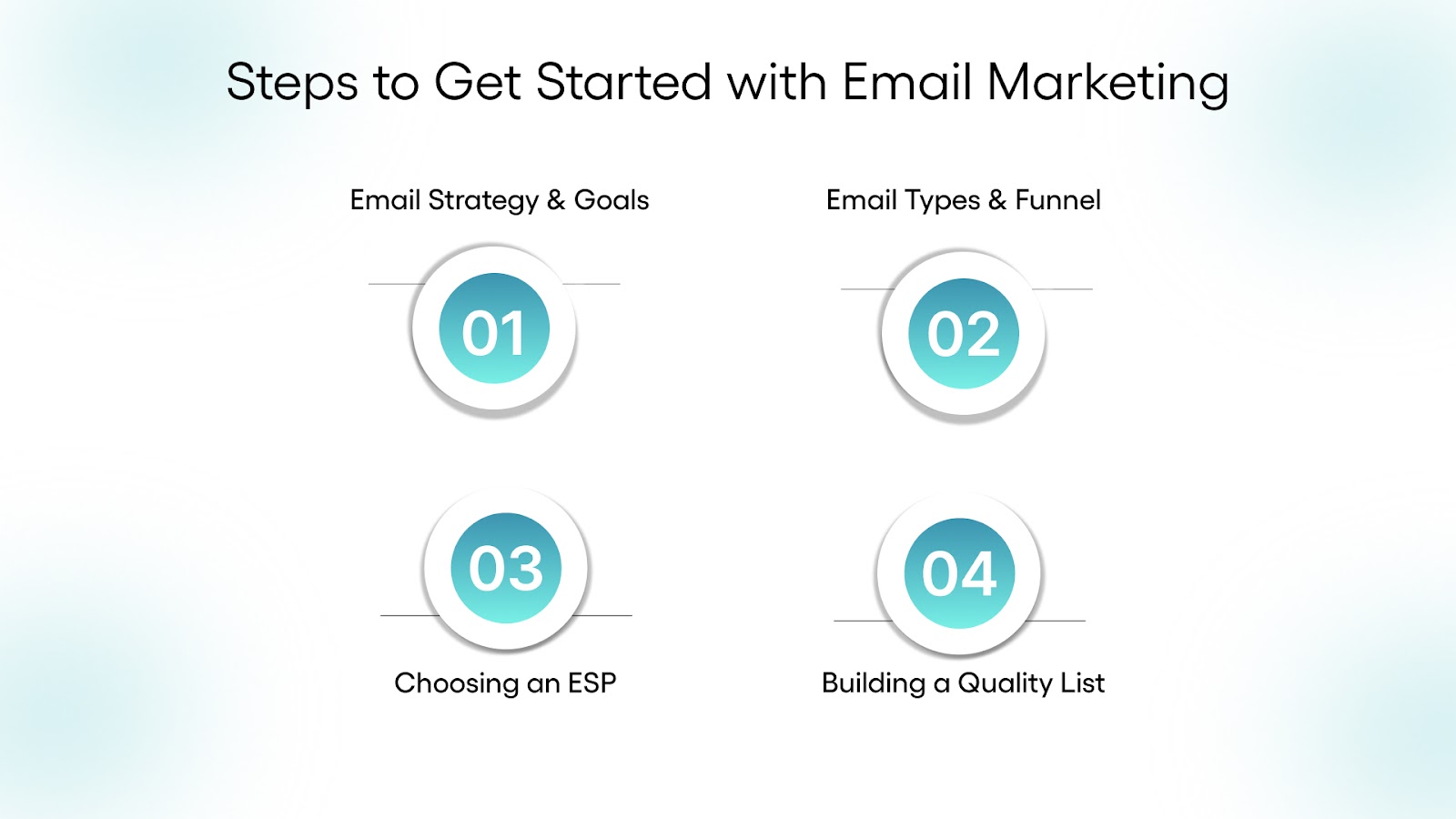
Consider this your email marketing 101 if you're new to outreach. These four steps will help you build a solid foundation.
Step 1: Define Your Email Strategy & Goals
Every effective email campaign begins with a clear purpose. Without it, even well-designed emails fall short. Before writing a subject line or scheduling a send, take a step back and define what success should look like. Your objective will shape everything: content, frequency, timing, and follow-up.
Here’s how to bring structure to your strategy:
- Start with a single outcome. Are you looking to schedule meetings, nurture dormant leads, or introduce a new service? Each goal calls for a different tone, flow, and call to action.
- Match your goal to your buyer's stage. Early-stage prospects may need educational content. Warmer leads respond better to direct offers or invitations.
- Keep MRR in focus. Tie every campaign to a sales-related milestone, SQL generation, appointment confirmations, or account engagement, not vanity metrics like opens alone.
- Set measurable checkpoints. For B2B campaigns, track email reply rates (benchmark: 3–7%), qualified meeting conversions (aim: 10–20% from replies), and lead velocity over time.
- Limit one goal per campaign. Trying to educate, upsell, and re-engage in a single email weakens your message. Keep the objective focused and the reader’s next step simple.
A clear strategy helps you avoid the trap of sending for the sake of it. It also gives your sales team something far more valuable than opens or clicks, i.e, qualified intent.
Step 2: Email Types & Role in the Funnel
Different emails serve different stages of the buyer journey. Choosing the right type ensures your message aligns with where the prospect is and what they need next.
Here are four key types B2B firms should use strategically:
- Initial emails: Sent right after someone fills out a form or downloads something. These aren’t just polite confirmations; they’re your first chance to build trust, share useful info, and qualify leads.
- Promotional Emails: Used to highlight services, limited-time offers, or key differentiators. Staffing and recruitment firms can use these to promote hiring events or talent pool updates.
- Newsletters: Keep prospects warm with updates, industry trends, or insights. Manufacturing firms often use these to share certifications, case studies, or operational milestones.
- Re-engagement Emails: Sent to dormant contacts or lapsed accounts. These are valuable for re-opening conversations, especially when tailored to past interest areas.
Each type plays a role in guiding buyers from interest to intent, and, done right, can feed directly into SQL generation and booked appointments.
Step 3: Choosing an ESP That Matches Your MRR Goals
Your email service provider (ESP) directly affects your ability to generate qualified leads and maintain a consistent sales pipeline. When choosing the right platform, focus on features that support long-term revenue outcomes, not just one-time sends.
Key capabilities to look for:
- Segmentation tools that help you group contacts by industry, behavior, or sales stage are crucial for B2B firms targeting multiple decision-makers.
- Analytics and reporting that go beyond open rates to track replies, conversions, and meeting outcomes tied to MRR.
- Deliverability support to ensure your emails reach inboxes, not spam folders, especially when sending to business domains.
TLM (The Lead Market) provides B2B firms with end-to-end email outreach support using a proprietary stack built around segmentation, performance tracking, and deliverability. Instead of handing over tools, we manage the execution, ensuring each campaign reaches the right audience, triggers the right action, and contributes directly to your MRR goals.
Step 4: Building & Maintaining a Quality List
Your email list is only as valuable as the intent behind it. For B2B outreach to translate into qualified leads and monthly recurring revenue, the list needs to be clean, current, and built through permission-based methods.
Here’s how to build a list that gives results:
- Use high-intent lead magnets. Offer something valuable to your ICP: a planning checklist, pricing guide, or industry insight tailored to MSPs, staffing firms, or tech buyers.
- Add gated content strategically. Don’t gate everything, reserve it for materials that signal buying interest. This filters out low-quality contacts early.
- Offer access over incentives. Early access to new services or exclusive updates often drives stronger signups than discounts in B2B environments.
- Prioritize ongoing list hygiene. Regularly remove bounced, unresponsive, or outdated contacts. A smaller, high-quality list will outperform a bloated one every time.
TLM helps you build opt-in email lists from scratch using tailored campaigns that attract the right buyers and maintain engagement over time. Every list we build is focused on one outcome: lead quality that directly supports MRR.
Check our guide on How to Build an Email Marketing List in 2025 for proven, permission-based tactics that attract the right prospects and keep your pipeline clean.
Before you hit send, it's important to get the technical and legal foundations right. Here’s what you need to know about email compliance and deliverability to ensure your campaigns land in the inbox.
Email Compliance and Deliverability Basics
Strong deliverability starts with following the rules and sending responsibly. Email campaigns must comply with legal standards and technical protocols to maintain sender credibility.
Key practices to implement:
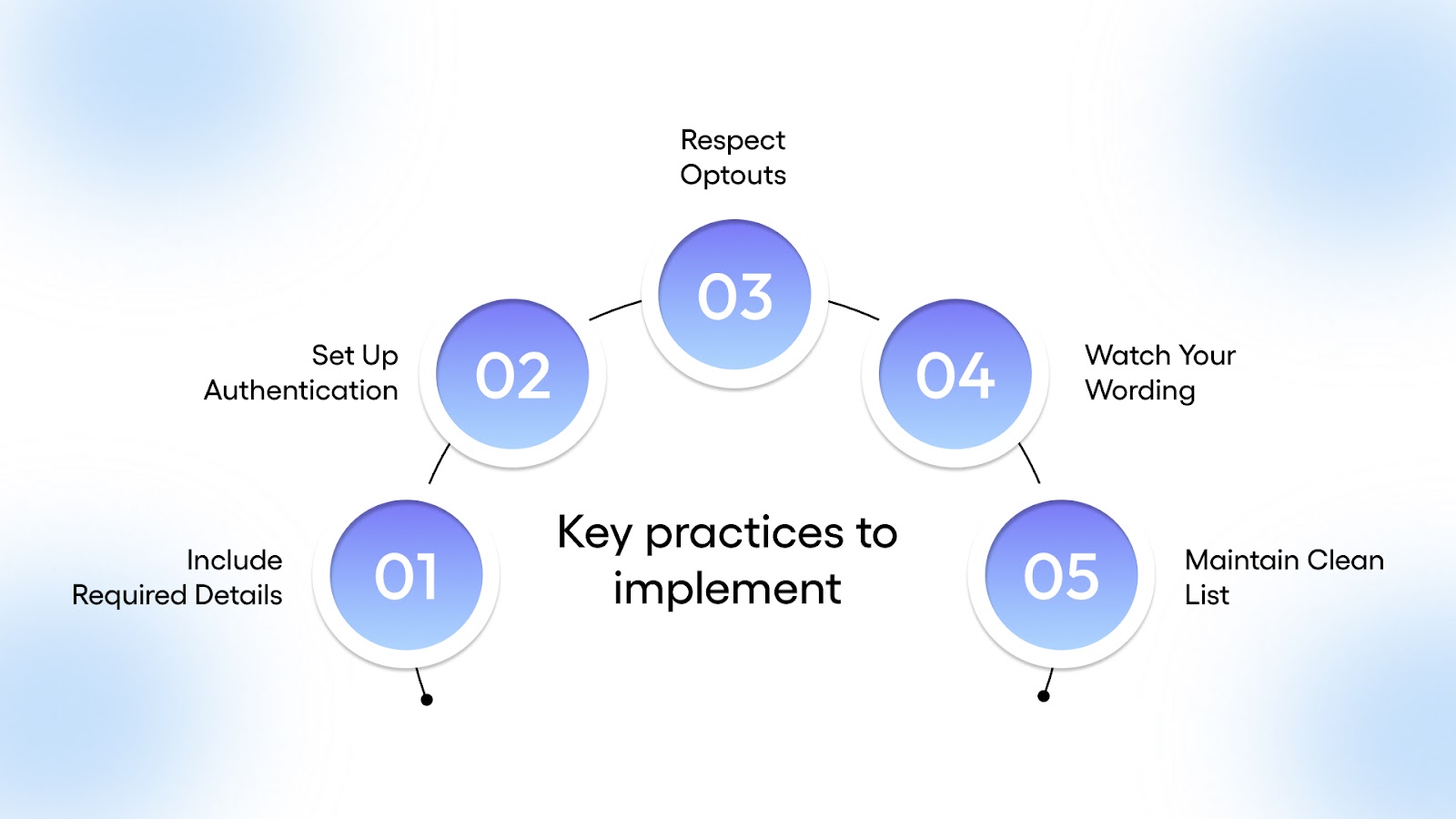
- Include required details: Always add a valid sender name, physical address, and a clear unsubscribe option in every email (as per CAN-SPAM).
- Set up authentication: Use SPF and DKIM to authorize your sending domain and prevent misuse.
- Respect opt-outs: Make it simple to unsubscribe, no extra steps or hidden links.
- Watch your wording: Avoid spammy subject lines, excessive punctuation, and misleading phrasing.
- Keep your list clean: Regularly remove invalid, inactive, or unengaged contacts to support inbox placement.
These steps help maintain deliverability and ensure your messages reach the intended recipients. Once your emails are legally sound and technically ready to land in inboxes, the next step is making sure they actually perform.
Also, check out How to Master Email Marketing for B2B Lead Generation.
Tips for Executing Email Campaigns To Drive Pipeline Growth
Once your goals and list are in place, knowing how to run an email marketing campaign becomes essential. This section builds on the fundamentals of email marketing 101 and shows you how to write, send, and optimize emails that lead to real sales conversations and consistent MRR outcomes.
1. Write with Purpose
Effective emails start with structure. The subject line, body content, and CTA should work together to move the reader toward a clear next step.
- Subject lines should be clear and context-driven: Keep them short, relevant, and tailored to the reader’s role or stage.
- Use visual hierarchy: Bold headers, short blocks of text, and clean layouts make emails easier to scan.
- Include one strong CTA: Focus on a single, measurable action that ties directly to your service or offer.
2. Segment and Personalize at Scale
Sending the same message to your entire list reduces engagement and clutters the sales process. Segmentation ensures that the right message reaches the right person at the right time.
- Segment by role, industry, or behavior: Tailor campaigns for MSPs, recruiters, or IT managers based on business needs.
- Personalize based on known attributes: Use job titles, past interactions, or interest indicators to keep outreach relevant.
- Match segments to sequences: Ensure the content and pacing of your emails reflect where each lead is in the sales journey.
3. Test, Measure, Improve
Every email is an opportunity to learn and grow. Consistent testing and data tracking help optimize performance over time.
- Run A/B tests on subject lines, send times, CTAs, and formatting.
- Focus on meaningful metrics. Prioritize replies, meeting bookings, and lead quality, not just open rates.
- Use campaign data to refine messaging. Drop what doesn’t work and scale what does.
4. Build Sequences That Start Conversations
Email is a channel for two-way communication where sequences help automate consistency while keeping messaging warm and human.
- Set up structured sequences: Welcome flows, nurture tracks, and re-engagement emails keep leads moving through your pipeline.
- Use behavior-based logic: Trigger follow-ups based on actions like link clicks, page visits, or downloads.
- Invite replies: Adding soft prompts like “Should we schedule time to discuss?” encourages engagement without pressure.
5. Send with Strategy
Timing can make or break your outreach. Align your sending patterns with how your audience prefers to engage.
- Send 1–2 emails per week, max: This keeps you present without overwhelming B2B buyers.
- Use campaign logic, not mass sends: Match send frequency and messaging cadence to sales cycles and lead temperature.
Building and running a successful campaign takes consistent execution, strategic oversight, and bandwidth. If you're looking to apply these email marketing 101 principles without stretching your team thin, this is where The Lead Market (TLM) can step in.
Recommended: B2B Email Marketing Strategies and Best Practices.
Need a Trusted Partner to Get Email Outreach Right?
Getting started with email marketing doesn’t require a massive budget or complicated tools. It requires structure, clarity, and consistency. But if you're still figuring out how to apply all of this, or if you're short on time, bandwidth, or strategy, we can help you out.
TLM (The Lead Market) helps B2B companies use email marketing as a predictable engine for pipeline growth and MRR. With over 9 years of experience across MSPs, staffing, tech, and manufacturing sectors, we specialize in outcome-driven campaigns backed by proven systems and proprietary tools.
We handle everything from strategy and targeting to execution and follow-up, so your team can stay focused on closing, not chasing.
Here’s what we can manage for you:
- Lead Generation: Build a compliant, accurate, and responsive email list tailored to your ICP, without relying on cold lists or irrelevant contacts.
- Sales Qualified Leads: We filter out noise and pass only deal-ready leads to your sales team, ensuring your pipeline stays focused on high-value prospects.
- Appointment Scheduling: Convert interest into confirmed calls with key decision-makers. Our team handles the back-and-forth so your calendar stays productive.
- Demand Generation: Nurture early interest through consistent outreach and content-based engagement, keeping your brand top-of-mind.
- Targeted Campaigning: Customized campaigns designed around account segments, pain points, and buyer intent, built to drive action from high-value targets.
- Account-Based Marketing: Personalized outreach plans that align with complex B2B buying cycles. We help you go deeper with fewer accounts for better ROI.
TLM is purpose-built for companies looking to drive real results through structured, strategic email outreach. Schedule a Meeting to see how we can help you convert intent into MRR.
FAQs
1. What is the first step to running a successful email marketing campaign?
Start by clearly defining your goal, whether it's to generate leads, schedule meetings, or nurture existing contacts. Then segment your audience, choose an appropriate email platform, and plan a sequence that aligns with your sales cycle.
2. How often should I send emails to B2B prospects?
For most B2B campaigns, 1–2 emails per week is ideal. This maintains engagement without overwhelming the recipient. Always track engagement data to adjust frequency based on what works best for your audience.
3. What tools do I need to manage B2B email campaigns effectively?
Look for tools that support segmentation, deliverability optimization, engagement tracking, and compliance. If managing these tools feels like a stretch, TLM uses proprietary tools to handle the end-to-end execution of email campaigns, helping clients stay focused on qualified sales conversations.
4. How do I keep my email list clean and compliant?
Use opt-in methods, offer clear unsubscribe options, and regularly remove inactive or bounced contacts. Authentic list-building practices and good hygiene protect your sender reputation and help maintain deliverability.
5. Can TLM help set up and run my email marketing campaigns?
Yes. TLM (The Lead Market) supports B2B companies with fully managed email outreach, from list building and segmentation to campaign execution and appointment setting. If you're looking for a predictable, qualified pipeline without internal overhead, we can help.


